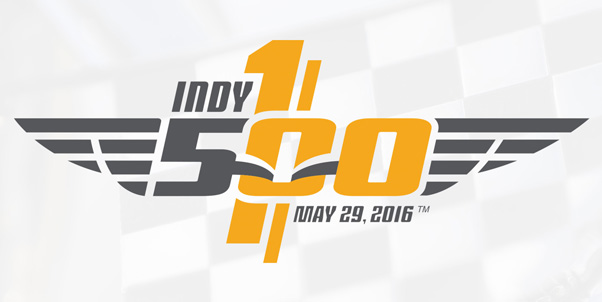What does Indy mean, exactly?
 Thirty-three.
Thirty-three.
Two-and-a-half.
Five hundred.
Two hundred fifty thousand.
When it comes to the greatest sporting event in the world, they’re the numbers that describe the size of the field — 33 drivers, aligned in 11 rows of three — the size of the circuit and length of the race — 200 laps around a 2.5-mile track — and the six-figure size of the crowd in attendance.
This year, there’s a new one rolling in.
One hundred.
When the green flag drops 12 minutes after noon in Speedway, Indiana, on May 29, it’ll mark the start of the 100th running of the Indianapolis 500, the aptly-nicknamed “Greatest Spectacle in Racing."
For me, there’s no better day than the Sunday of Memorial Day weekend. It’s the official unofficial start to summer, and an opportunity for an entire city to come together around one fantastic event.
There’s always been a special place in my heart for this race. I have fond memories of my days as a kid growing up, going to autograph sessions at local car dealerships or heading out to the Brickyard to take a lap around the famed circuit in our car, and as I grew older, I started watching the race with more interest. When I actually went to the 500 for the first time six years ago, I was hooked beyond belief — there’s simply no way to describe what seeing a car dive into turn one at 235 miles per hour looks like until you’ve seen it for yourself.
Before you do the math, yes, that’s covering more than a football field every second.
But for me, the 500 has always been about more than the simple spectacle the event is: It’s been about family.
Growing up, whenever we’d go back to visit my grandparents in Poland, Ohio, I was greeted with constant reminders of my grandfather’s love of auto racing. When my dad and uncle were kids, they’d go with him to races around Northeast Ohio and Western Pennsylvania, and when I was back to visit family, my grandpa would sit downstairs with me as I rode around their basement on a tricycle, acting as if I was myself driving an IndyCar.
 |
| Hornish smokes Andretti at Indy in 2006 in the final 200 yards |
And when we went back every year at Memorial Day, we’d sit down and watch the 500 — the race my grandfather adored — from more than 300 miles away. No memory sticks out more than 2006, when Sam Hornish Jr. passed 19-year-old Marco Andretti in the final 400 feet of the race to win the 500, breaking my heart in the process.
But it also sticks out because it was the last 500 I watched with my grandfather, who died in 2007. That means that this year, the 100th running, will be the 10th one I’ve watched without him. Since, I’ve done my research on the history of the event — from one of my grandpa’s favorite drivers, Bill Vukovich, to more recent winners like Arie Luyendyk (too bad his “Bachelorette" contestant son couldn’t drive a car quite as well) — and appreciated the spectacle much more than I did when I was still a kid who’d just started middle school.
And while my grandfather’s death meant the end of one tradition, it allowed for the start of another: For the seventh straight year, I’ll be taking in the 500 with my dad. That means starting at the Grand Prix of Indianapolis road course race on May 14, hitting qualifications for the 500 the next weekend and then heading up the road to Anderson for the “Little 500" sprint car race — pitting 33 sprint cars on a quarter-mile track — the night before the big thing.
Being an IndyCar fan isn’t a particularly common thing, especially among a generation of kids that grew up on Forza’s road-racing ethos and NASCAR being the biggest racing series in the United States, and when people ask me about my IndyCar background, it can be hard to find the words to describe why I love it so much.
So when talking with people who’ve never experienced the 500, I just default to the ones Al Unser Jr. used after his 1992 win.
“You just don’t know what Indy means." Alex Carson/The Observer
